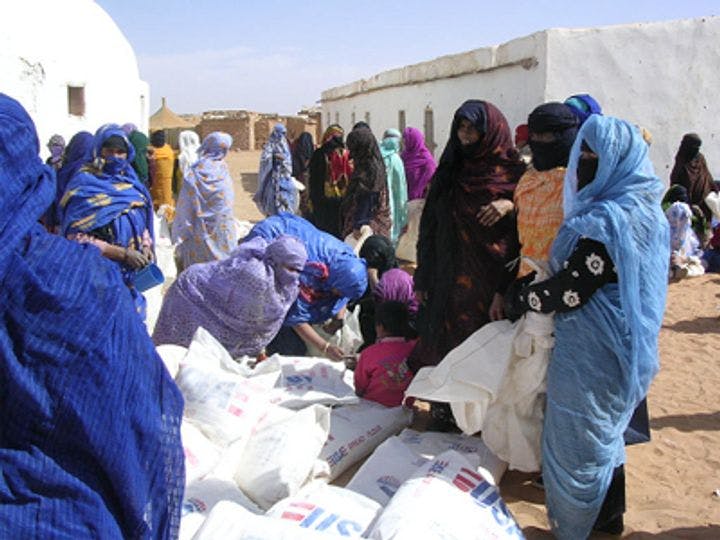Fall 2007
Thirty Years of Waiting
– The Wilson Quarterly
Refugees have been waiting three decades for civil strife in the Western Sahara to end.
Conditions in the Western Sahara refugee camps near barren Tindouf, Algeria, have measurably improved since the United Nations brokered a cease-fire between Morocco and Polisario independence fighters more than a decade ago. But as life has become slightly less harsh in the tent encampments, much of the impetus for compromise in the tangled 30-year war has disappeared, writes Jacob A. Mundy, a Ph.D. candidate at the Institute of Arab and Islamic Studies at the University of Exeter, in England.
Western Sahara, a former Spanish colony that hugs the Atlantic Ocean south of Morocco, is one of the most desolate places on earth. Virtually all food is imported, and temperatures can go from below freezing at night in winter to above 130 degrees in summer, with seasonal winds propelling an incessant barrage of sand. Only .02 percent of Western Sahara’s land is arable, and the sole known resources are phosphates and iron ore, which are extracted from mines on the opposite side of the country from the refugee camps. Energy companies have recently begun to explore for offshore oil.
When Spain abruptly pulled out of the colony as Generalissimo Francisco Franco lay dying in 1975–76, both Morocco to the north and Mauritania to the east invaded. Half the population fled to Algeria, which offered strong support for the Polisario. Refugees in the “temporary” camps—initially almost all women, children, and the elderly—have been fed and sheltered for more than 30 years by international aid agencies. Malnutrition and anemia have been rampant, with as many as half of all pregnancies ending in miscarriage.
An asymmetrical war raged for 15 years. The Polisario—made up of independence fighters from a linguistic group called the Sahrawi—engaged a much larger Moroccan army, which gradually erected a 1,500-mile wall to isolate the guerillas in the eastern desert. Mauritania withdrew early from the fight, but King Mohammed VI of Morocco pledged that “we shall not give up one inch of our beloved Sahara, not a grain of its sand.” In 1991, the United Nations brokered a cease-fire, promising the Sahrawi a referendum on the future of the territory, but the plan has foundered.
After the 1991 accord, the Polisario fighters moved into the refugee camps, bringing with them cash and the beginnings of a market economy. The cash came from Spanish pensions for Sahrawis who had served in the colonial security services, remittances from family members abroad, and gifts from Spanish families, who host an estimated 10,000 children every summer. The camps now have a few cars, mud houses, and small businesses. Their growing affluence, according to Mundy, encourages the refugees to pursue more economic opportunities in the camps rather than participate in the peace process.
Mundy says that Westerners are mistaken if they think harsh conditions in the refugee colonies will pressure the Polisario to compromise with Morocco. That moment seems to have passed. Beginning in the 1990s, former U.S. secretary of state James A. Baker, acting as a UN envoy, worked out a compromise: The Polisario would rule the Western Sahara semi-autonomously for four years. After that, Morocco would get a plebliscite, allowing all residents of the territory—including new settlers—to choose continued semi-autonomy, integration, or independence. The Polisario agreed. Morocco flatly refused. Baker resigned soon after.
Today, an intifada is steadily growing inside the Moroccan-controlled areas. An anti-compromise “reform” faction, committed to “all the homeland or martyrdom,” has arisen within the Polisario, which has been led by Mohammed Abdelaziz. There appears to be little interest in deal making. The refugees would “rather live in their self-made exile than return to an uncertain future in a Moroccan Western Sahara.”
* * *
The Source: "Performing the Nation, Prefiguring the State: The Western Saharan Refugees, Thirty Years Later" by Jacob A. Mundy, in The Journal of Modern African Studies, June 2007.
Photo courtesy of Wikimedia Commons
Up next in this issue
